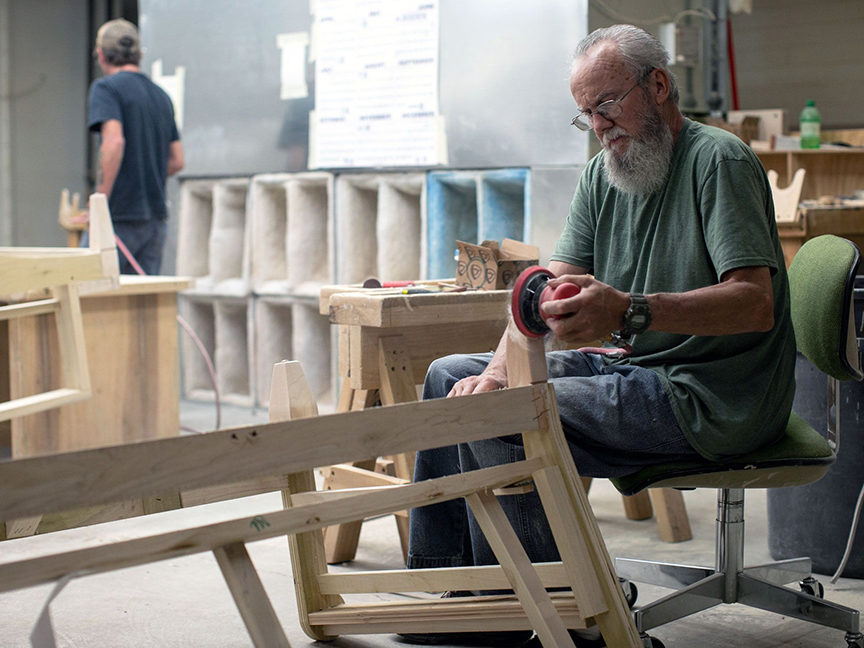
Visit Our Sponsors |
|
|
|
|
|
|
|
|
|
|
|
|
|
|
|
|
|
|
|
|
|
|
|
|
|
|
|
|
|
|
|
|
|
|
|
|
|
|
|
|
|
|
|
|
|
|
|
|
|
|
|
|
|
|
|
|

As U.S.-China trade talks undergo more advances and setbacks than a ping-pong match, South Carolina businessman John Ling is increasingly pessimistic that any meaningful trade deal will be reached under President Donald Trump.
“I’m becoming very doubtful there will be any deal that would solve the current problem,” said Ling, a consultant for Chinese companies doing business in the U.S.
The past week has cast the outlook for a trade deal between the U.S. and China into deeper confusion. Trump rattled markets last Tuesday by suggesting a phase-one trade deal may have to wait until after the 2020 elections. Then, two days later, the president said the talks are “moving right along” and people familiar with the negotiations told Bloomberg News the sides are close to agreeing on a pact.
On Friday, White House economic adviser Larry Kudlow said a deal is coming down to the final stages but he acknowledged “delicate” proposals like Chinese farm purchases are still being discussed. Meanwhile, the Trump administration is leaving open the prospect of slapping tariffs on another $160 billion of Chinese goods on Dec. 15 if nothing changes.
Trump has a history of indulging in brinkmanship to dial up the pressure in trade negotiations, especially as deadlines approach. In September, Trump said he wouldn’t be satisfied by a partial deal with China — only weeks before he and President Xi Jinping announced the outlines of the stage-one trade deal.
Even if that’s his strategy to win concessions, it’s doing little to help companies that import from China who say they can’t plan for next year when they don’t know what’s coming next week or month. Importers in the U.S. pay the duties when the products enter the country — often passing the cost onto consumers — even though Trump insists the tariffs are paid by China.
“I’m very frustrated, absolutely,” Curt Christian, a Nashville, Tennessee-based furniture importer, said Thursday after days of back-and-forth headlines and seesawing markets. “I don’t know how to plan. That’s the issue.”
Christian already lost a furniture business in the early 2000s, when a wave of cheap Chinese imports decimated much of the U.S. wood furniture industry. He eventually picked himself up and created a new company, Function First Furniture, that supplies furniture to university dormitories and student housing developers. His revenue is in the tens of millions of dollars.
What burns him is that he supports the Trump administration’s intentions to level the playing field with China, Christian said. However, he needs more time to cope with the fallout from tariffs. While he imports some furniture from Vietnam and Malaysia, 70% still comes from China.
“Give me time to move, because I can’t just take $35 million worth of product and move it overnight,” he said. “You can’t just turn a battleship.”
Other companies give similar testimonies of being unable to shift investment plans or factories when they don’t know how long the trade war will last.
New York-based Delta Children’s Products imports cribs from China and elsewhere in Asia and has seen those sales fall since the tariffs took effect, said President Joe Shamie. But so too have sales of its U.S.-made mattresses, he said.
He would consider moving more production out of China if he knew what to expect. Instead, he’s afraid to act because a deal to slash tariffs could come at any time. “Imagine you’re about to buy a house, and there’s a rumor the house might be half-price tomorrow. How do you know what to do?”
Jay Foreman, who heads a Boca Raton, Florida-based toy company, likes to joke that he’s about 25 miles from Trump’s Mar-a-Lago resort and he’d love to discuss trade with the president over lunch. For now, he’s watching the news about the trade war, including Trump’s tweets, “like it’s my blood pressure and my cholesterol.”
Foreman’s company, Basic Fun!, makes some of America’s most iconic toys under license, including Lincoln Logs and Tonka trucks, and relies on China for 90% of its production. For now, all of his Christmas season merchandise is already in the U.S. tariff, but he’s fretting over the 15% tariffs that may go into effect this month for merchandise crossing the ocean. He expects to have to eventually bump up the price of all his products at least 15%, if not more.
“Imagine you have 180 employees and 100 containers that are due to arrive any day for the next three weeks, and dozens and dozens the rest of the year — and we don’t know if it’s going to cost us 15%, 20%, 25%, because this administration is so unpredictable,” Foreman said on Friday.
RELATED CONTENT
RELATED VIDEOS
Timely, incisive articles delivered directly to your inbox.







